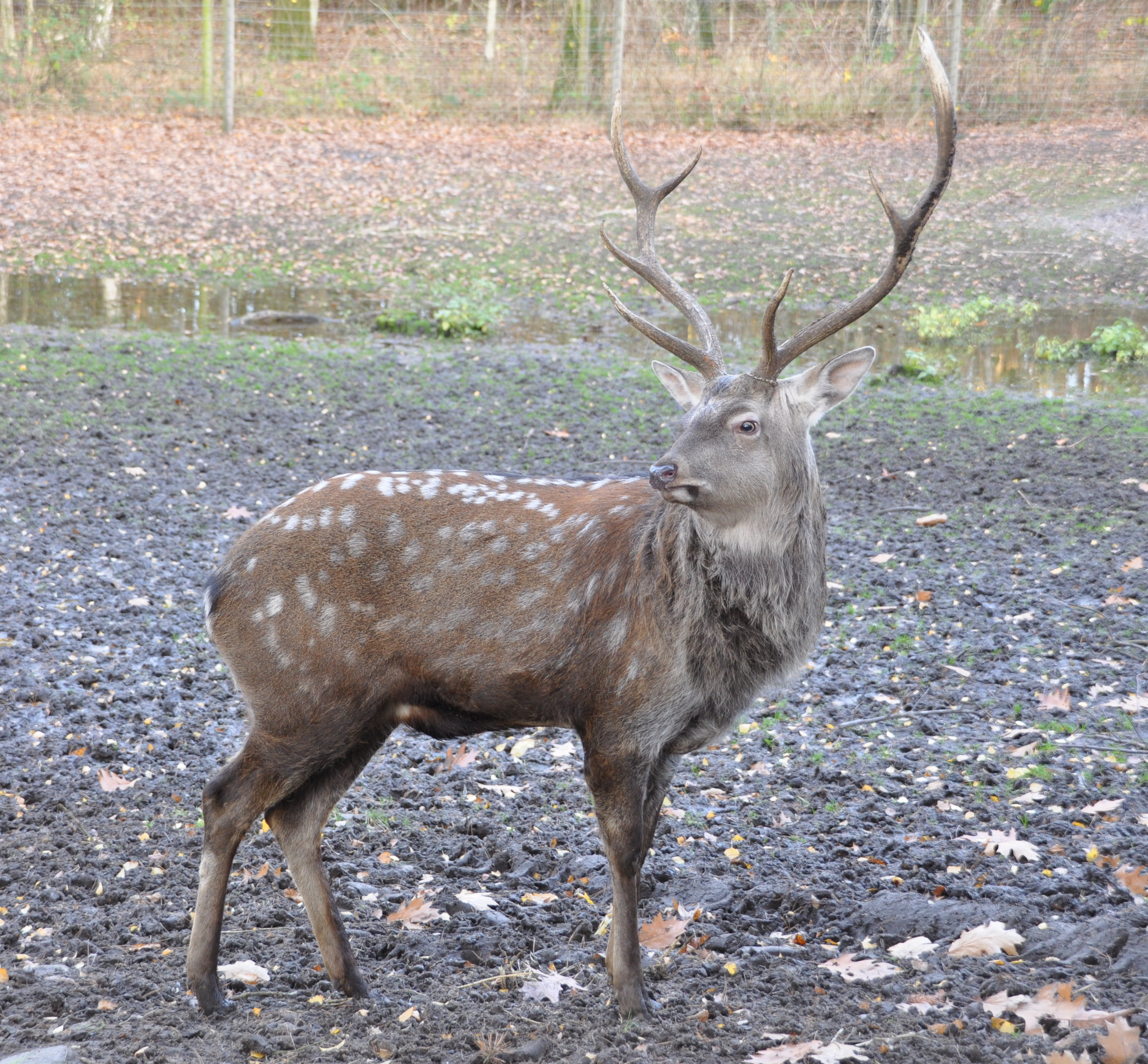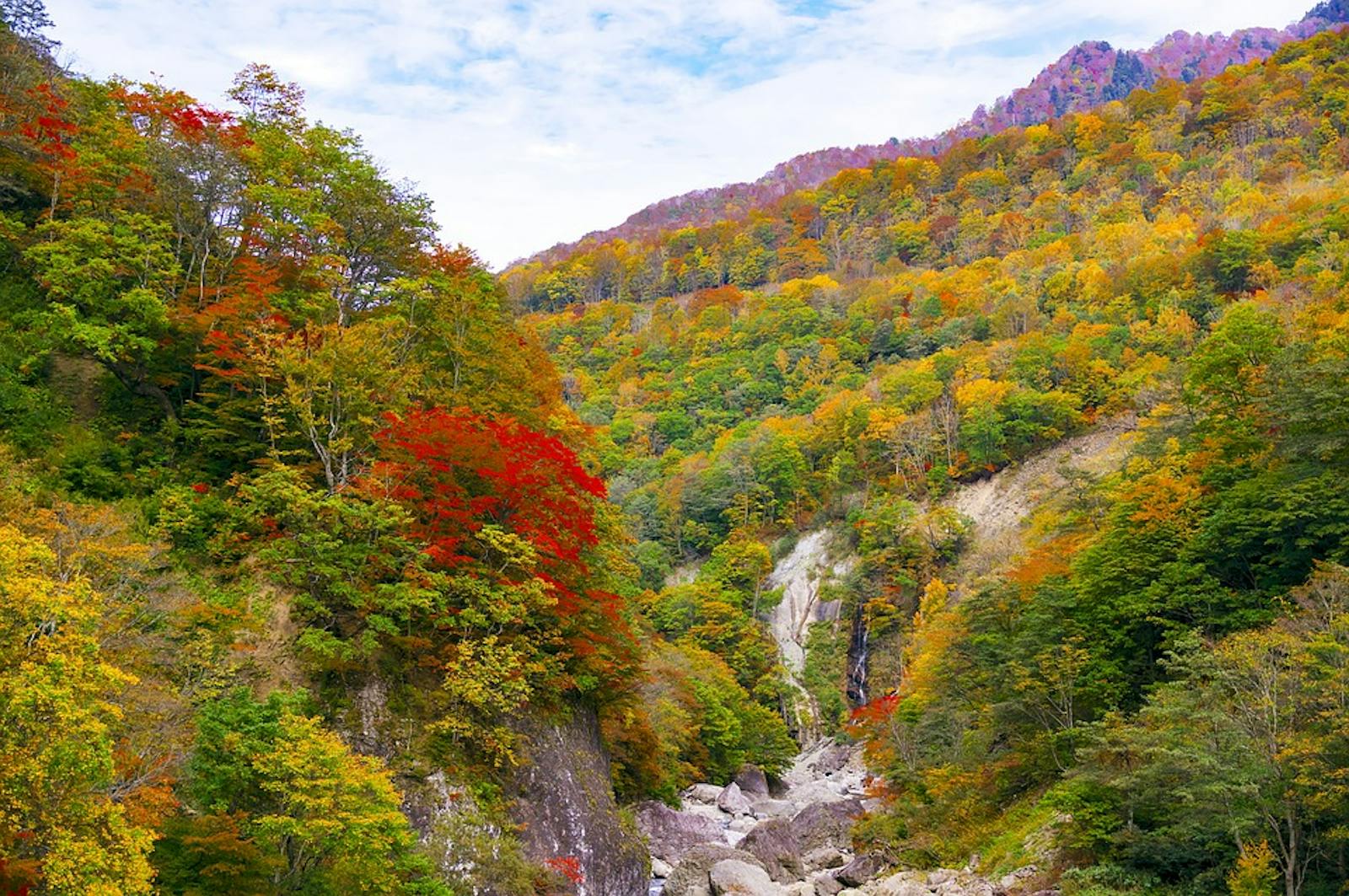Taiheiyo Montane Deciduous Forests
The ecoregion’s land area is provided in units of 1,000 hectares. The conservation target is the Global Safety Net (GSN1) area for the given ecoregion. The protection level indicates the percentage of the GSN goal that is currently protected on a scale of 0-10. N/A means data is not available at this time.
Bioregion: Japan Forest Islands (PA47)
Realm: Eastern Eurasia
Ecoregion Size (1000 ha):
4,200
Ecoregion ID:
683
Conservation Target:
50%
Protection Level:
6
States: Japan
Spectacular mountain ranges, huge forests of Japanese beech, and the endemic Japanese macaque can be found in this ecoregion, which lies predominantly on Japan’s largest island, Honshu. Abundant summer rainfall creates mountain streams which carve through the mountains where Asiatic black bear, rock ptarmigan, and Japanese serow occur. The main threats to wildlife here include climate change and overgrazing by ever-expanding populations of sika deer.
This mountainous ecoregion extends from Kyushu island in the south of Japan to the northeastern coast of Honshu, with a small section on Shikoku island. The southern Japanese alps are encompassed by the region, including remnants of Japan’s southernmost glacier and the country’s second highest mountain, Mount Kitadake, at 3,193 m. One of the constituent mountain ranges—the Minami alps—demonstrate the fastest uplift rate in Japan of 3–4 mm annually, with abundant rainfall forming deep V-shaped valleys across the landscape.
The temperate climate is characterized by warm summers, with temperatures reaching up to 32ºC in the south. Northern areas are generally cooler, although sub-zero winter temperatures are typical across the entire region. Monthly precipitation ranges from approximately 200 mm in the summer to less than 30 mm during winter months.

The flagship species of the Taiheiyo Montane Deciduous Forests ecoregion is the Japanese macaque. Image credit: Angelica Kaufmann
Light snowfall in the region means that the tree line is higher than other areas of Japan, with a southern limit on Kirishima at around 1,000 m. Deciduous forests are generally dominated by Japanese beech trees, forming communities such as Corno-Fagetum crenatae, Sapio-japonica-Fagetum crenatae, and Fagetum crenatae-japonicae. Katsura trees grow in some localities, and a few evergreen species such as dwarf bamboo can be found in the understorey. Due to the moist air masses passing over the western half of Japan’s mountains, the vegetation in this eastern ecoregion is not as developed as western forests.
Asiatic black bear, sika deer, Japanese serow, wild boar, Japanese weasel, and Japanese flying squirrels are some of the characteristic fauna in the area, with avifauna represented by species such as the Japanese robin, rock ptarmigan, spotted nutcracker, and vulnerable fairy pitta. The Mount Omine area is home to the second largest population of Japanese macaque, and the copper pheasant can also be found across much of the region, although populations are classified as ‘Near Threatened’ due to significant historic hunting. Mountain trout can be found throughout mountain streams where salamanders and the endemic Kajika frog also make their home.
Tourism and agriculture are the main economic activities here, with huge crowds of tourists visiting the mountains—many of which are worshipped as sacred mountains—each year. At lower elevations, forests have been cleared to make way for rice paddies and other crops including fruits such as grapes and peaches in Yamanashi.
Large parts of the region also experienced deforestation following huge demand for timber after the Second World War, and plantations of species such as Japanese cedar and Japanese cypress which replaced the primary forest are still managed in some areas today. Several protected areas and IBAs exist across the region, as well as the UNESCO Biosphere Reserves of the Minami Alps and the Mount Odaigahara, Mount Omine, and Osugidani Biosphere Reserve at the southern tip of Kyushu.

Sika deer. Image credit: Creative Commons
Populations of sika deer have massively increased in recent decades to the extent that they now pose a significant threat to ecosystems in this region due to bark stripping and grazing of young trees. Invasive Siberian weasel are also a threat in the south of the region where they cause agricultural damage and outcompete the native Japanese weasel; in the north, coastal habitats are still recovering from the 2011 tsunami which caused significant ecological damage. The effects of climate change and rising temperatures permeate across the entire area, particularly threatening forests which are already at their climatic limits and for which there is little space remaining to allow an upwards shift in range.
Priority conservation actions for the next decade will be to: 1) continue to restore habitats in the north of the region which were damaged during the 2011 tsunami; 2) develop effective management plans for problematic species such as the Siberian weasel and sika deer to prevent further damage to wild and agricultural systems; and 3) undertake measures to protect loss of species in the future in light of predicted global temperature rise.
Citations:
1. Miyawaki, A. (1984). ‘A Vegetation-Ecological View of the Japanese Archipelago’. Bull. Inst. Environ. Sci. Technol. 11: pp.85-101
2. Japanese Ministry of Environment (2019) ‘Chichibu-Tama-Kai National Park’. [Online] Available from: https://www.env.go.jp/en/nature/nps/park/chichibu/point/index.html [Accessed 14/12/2019]
3. Government of Japan (2014). ‘Fifth National Report of Japan to the Convention on Biological Diversity’. [Online]. Available from: https://www.cbd.int/doc/world/jp/jp-nr-05-en.pdf [Accessed 20/12/2019]

.png?auto=compress%2Cformat&w=300)

